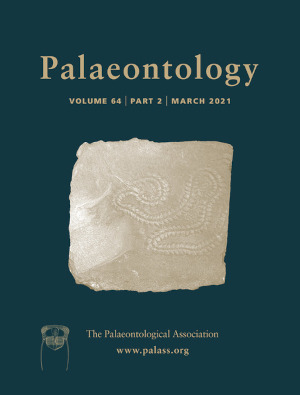Reg. Charity No. 1168330

Four neochoristoderan vertebral centra are described from the latest Cretaceous of New Jersey, USA. One specimen was recovered from the basal transgressive lag of the Navesink Formation in the area of Holmdel, New Jersey, and two others were recovered nearby and probably were derived from the same horizon. The fourth was recovered from the Marshalltown sequence in the vicinity of the Ellisdale Dinosaur Site. These vertebrae expand the geographical range of Late Cretaceous neochoristoderes in North America by over 2000 km further east, and represent the first neochoristoderan remains from the Atlantic coastal plain. To discern whether neochoristodere remains are to be expected in New Jersey, and elucidate why neochoristoderes are apparently so rare in Appalachia, we implemented ecological niche modelling to predict the range of suitable habitat for Champsosaurus, the only known genus of Late Cretaceous neochoristoderes. We found that in Appalachia, the ideal habitat of Champsosaurus probably existed slightly further north and west than the Atlantic coastal plain, and New Jersey is probably on or near the margin of this suitable habitat space. These results suggest that the occurrence of neochoristoderes in New Jersey is consistent with the habitat requirements of known Late Cretaceous neochoristoderes. These vertebrae may therefore represent the southern margin of a population of neochoristoderes that lived further inland, where latest Cretaceous sediments are not preserved. The continued recovery of material from Late Cretaceous deposits along the Atlantic coast, and review of existing collections, is encouraged to clarify the true distribution of neochoristoderes in Appalachia.